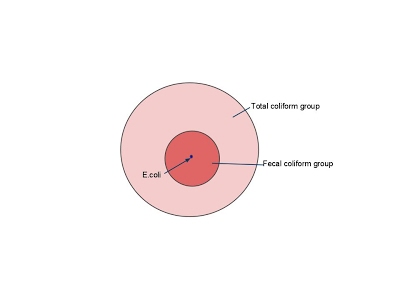Bacteria Testing
Introduction to Unit on Water Testing – Fecal coliform and E. coli
Bacteria are found everywhere. Even though bacteria have a bad reputation in our society, most types are completely harmless to humans, or even helpful! Bacteria are involved in the production of fuel, food, and medications. They help us digest our food and fight off certain illnesses. Bacteria are also used in environmental recycling and clean-up. Our world would not be able to survive without bacteria.
When we think about bacteria polluting our rivers and lakes, it is usually fecal coliform bacteria. Fecal coliform is a group of bacteria found in the intestinal tracts of warm-blooded animals, including humans and livestock. When large concentrations of fecal coliform bacteria are present in water, it indicates that the water is being contaminated by some source of manure or other waste. It also indicates the possibility that disease-causing organisms could be present.
The fecal coliform group contains many types of bacteria that are not necessarily harmful to human health. However, the group also includes Escherichia coli (E. coli). Whenever you hear about people getting sick from bacteria in drinking water, or from eating an undercooked hamburger, it is usually E. coli that is causing the illness. A water sample that tests positive for fecal coliform may also be positive for E. coli, and so the water should be treated or boiled before it is used as drinking water.
The fecal coliform group is part of a larger total coliform group that is found in good, healthy soils. Total coliforms are not necessarily harmful, but they can indicate contamination by fecal bacteria and are not desirable in drinking water. However in surface water it is normal to see total coliform bacteria, which simply indicate the presence of soil, sediment, or other sources of coliform. The relationship between total coliform group, the fecal coliform group, and E.coli is illustrated below.

In Kansas, the biggest contributors of fecal coliform bacteria to rivers and lakes are livestock operations, especially those that have a large number of animals in a small, confined area. Anyone who has been on a farm knows that cattle and other livestock produce large amounts of manure. Rain water washes this manure into our rivers, streams and lakes, carrying with it fecal coliform bacteria. Remember from the nutrient lesson that manure also contains the nutrients nitrogen and phosphorus, so manure is doubly bad for our rivers and lakes. Other sources of fecal coliform bacteria include wildlife populations, and leaky septic systems that haven’t been well-maintained. Pet waste can also be a problem in cities, which is one reason you are asked to collect it when you walk your dogs on city streets.
Our drinking water is treated to remove bacteria before it comes through our taps. However, everything that has to be removed from water costs money, and that money is paid by you and your family through taxes. The more we can reduce the pollution in our water, the cheaper it will be to make it suitable for us to drink. Strips of native trees and grasses between livestock fields and the water source help filter out the manure before it reaches the river or lake. Some farmers build retention ponds to catch and isolate the runoff before it reaches drinking water sources like the Kansas River. It is also important to maintain rural septic systems, which can become cracked and leak over time. We must all work together as a community to reduce the amount of bacteria in our rivers, lakes, and streams.
